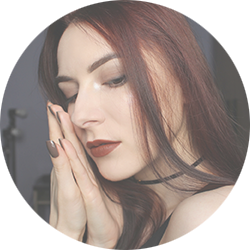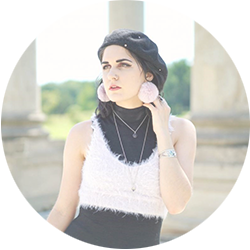







Welcome Back
Sign in to be closer to your community!
Follow other divas, like and comment
on their posts, message them, and see
who loved your posts!
Invalid username or password
You have not verified your account by clicking on the link we sent you via email. Please check your email folders (including your Spam folder) and click on the verify link sent.
Email is required
Password is required








Join FashionPotluck.com
Create your own profile in order to create content, follow other divas and like their posts, use our own messenger, and be a part of a growing international women community!
WELCOME TO OUR COMMUNITY
Fashion Potluck -
the first social media
platform for women.
You are free to read/watch & create content,
express your true self, and interact with others.
Join for free
Already a member? Log in here.
Purchase Alert
Dear Queen, you can only buy from one seller at the time. Please finish this purchase first in order to buy from another FP member
Comments
Please select one platform to continue
Please select one platform to continue
Please select one platform to continue
Please select one platform to continue
Please select one platform to continue
Please select one platform to continue
Please select one platform to continue
Please select one platform to continue
EDITOR APPROVED
You are wondering what is this 'Editor Approved'?
Well, this is pretty awesome! In order for the post to qualify and receive this accolade, it has to have a minimum of 700 words and two images (at least one original).
Receiving this accolade means two things: 1) Your content is amazing! Good job! 2) Your content qualifies for our monetization program. Every week two of the most read posts receive monetary rewards.
Have the badge & want to monetize your content?

FP-BLOG


In 2013, a twenty-one-year-old girl began sharing her poetry on Tumblr. One year later, she took her work to another social media, Instagram. Mixing writing with simple illustrations, Rupi Kaur soon became a feminist icon admired mainly by women thanks to her artistic poems expressing women's struggles and empowerment.
Born in India, to a Sikh family, she emigrated with her parents to Canada when she was four years old. Rupi Kaur became a The New York Times best-selling author at only twenty-three years old.
Her book "Milk and Honey" is an anthology of poetry, prose, and hand-drawn illustrations. Kaur split the book into four chapters, each one dealing with a different theme. In October, Kaur released her second collection of poems, "The Sun and Her Flowers."
But what you may not know is that she's only the tip of the iceberg to a more profound artistic movement known as "Instapoetry."

Rupi Kaur's poem published on Milk and Honey
Rupi Kaur is the pop star of poetry, but poetry itself has evolved immensely. In the last few decades, this art form became less than a popular profession. Besides, people don't regard the poem as a medium in which you can make enough money to sustain yourself. That's the way the Instapoetry movement contributes to how we recognize and consume verses. Instapoetry is accessible. It's consumable. It's intuitive to create and to interpret. And, most important, it's close to our lifestyle. it ceased to be something printed on a book tucked in a bookshelf. It's on our phones; it appears on our Instagram feed. We can interact with not only the poem but also with the poet.
Today's breakout literary stars are tech-savvy, focussed on social media and, in audience increasing numbers.
Also, forget about the editors, agents, publishers, and middle-man. Instead, they're finding fame and followers via social media. If you think about it, the definition of Instapoetry is pretty much close to Hemingway's description of writing itself, "There is nothing to writing. All you do is sit down at a typewriter and bleed.” Just swap "typewriter" for "smartphone." Plus you can do it standing up in the subway while going to work or lying down while you play with your pet in the living room. Either way, the form people create, share and read poetry has changed. Forever.
WHEN POEMS GO VIRAL
Rupi Kaur has 2.5 million followers on Instagram. R.M. Drake, another writer that uses Instagram to share his work, has 1.8 million. Beau Taplin, an author based in Australia, has 537 thousand, and Nikita Gill, from the UK, has nearly 380 thousand. The last two are also self-published. There are also profiles like "Atticus Poetry" whose work has been shared by celebrities and poetry lovers alike, but who remains anonymous.
But the way poets write and share their work through social media is entirely different from traditional poetry. Instapoetry is shorter, almost haiku-like. We could say it probably reflects our compulsiveness when checking our feed. It's easy to stay wandering instead of paying attention. When you go check your Instagram, you don't pretend to read a 100-stanza poem, do you?
Even then, Rupi Kaur's example shows us that a piece of art must respect its media to be successful, but also points out that it can also contribute to increasing the sale of poetry books.
Rupi Kaur's poems are far from being perfect. But we would say art itself shouldn't be. It's art, after all. It's about expressing feelings, empowerment, and self-awareness. There is no doubt that her work helped to inject adrenaline into poetry and brought it into the 21st-century, along with many other poets that are also exploring social media to write and expose their work.
HERE ARE SOME INSTAPOETS YOU MIGHT WANT TO FOLLOW
Orenda @poetrybyorenda: She uses illustrations to compose the emotional character of her poems.

https://www.instagram.com/p/BfE9EGiF-6t/
@makeblackoutpoetry: The poems are made by covering up the other words of a magazine article or newspaper. If you feel inspired, you can submit your creations following the same logic.

https://www.instagram.com/p/Bh2xyS1H2-G
Beau Taplin @beautaplin: As we mentioned before, this poet is from Australia. She has already published several books.

https://www.instagram.com/p/BhtS6fCnmhu
Nikita Gill @nikita_gill: We also mentioned her before. She writes impactful poetry about loss, being resilient and life in general.

https://www.instagram.com/p/BhZrqILBBP0
Lang Leav @langleav: She is a published novelist and poet that was born in a Thai refugee camp when her family was fleeing the Khmer Rouge Regime. She is based in New Zealand.

https://www.instagram.com/p/Bhux1srnNRd/
@quarterlifepoetry: This one you will wish for when you feel that slight despair of being an adult. #Relatable

https://www.instagram.com/p/BhrR7-hHxwU/
Brittin Oakman @b.oakman: Brittin is a mental health worker who will help you recognize the strength you have to face whatever it is. Extraordinary recommendation to get inspired for the day!

https://www.instagram.com/p/BhWtvHJFBfk/
R.M. Drake @rmdrk: Robert's books have colorful covers, which he often sold in well-priced bundles. Most of his Instagram publications are from his published poems, which talk about self-knowledge, regrets, loneliness, and expectations.

https://www.instagram.com/p/Bh2msYygY_i/
Comments
Related Posts
- What Makes Men’s Accessories Worth Investing In Today? by Ekim Fashion 0
- How to Plan Seasonal Plush Inventory Without Overbuying by Harnel Inc 0
- 6 Winter Season Reasons to See a Dermatologist ASAP by Monica Quinn 0
More Posts
- Affordable Embroidery Services | Free Design Assistance by Embroidery Designs 0
- Beyond the Hardwood: Finding the Fun in Absurd Physics Games like Basket Random by Suzanna Brown 0
- Why Cowboy Ties Are Making a Bold Fashion Comeback This Year by Rocky Mountain Western 0
Tags
Vote content out
Reason for voting this content out?
Reason for voting this content out?


 Login with Google
Login with Google Login with Twitter
Login with Twitter







 by
by
Add Comments